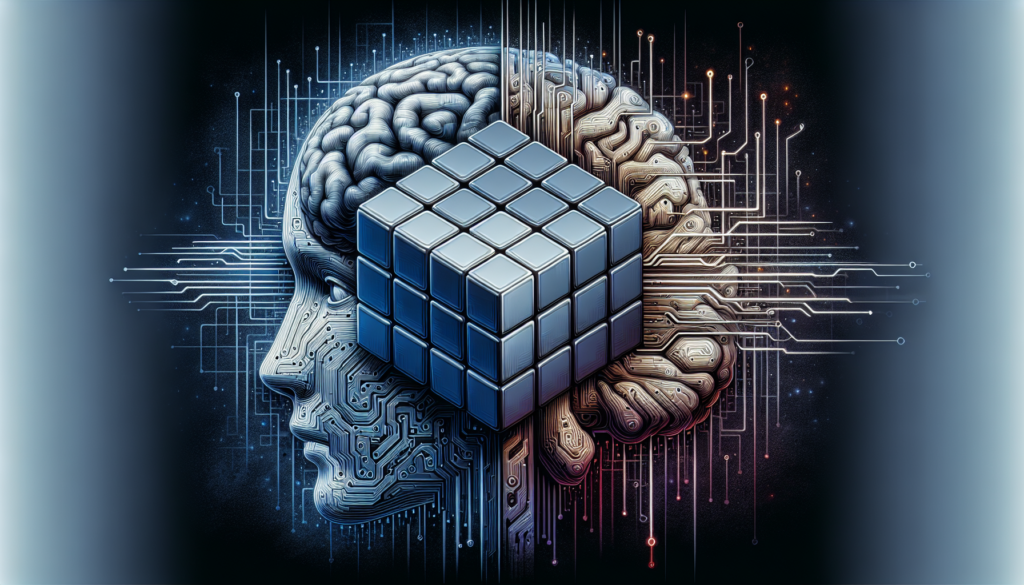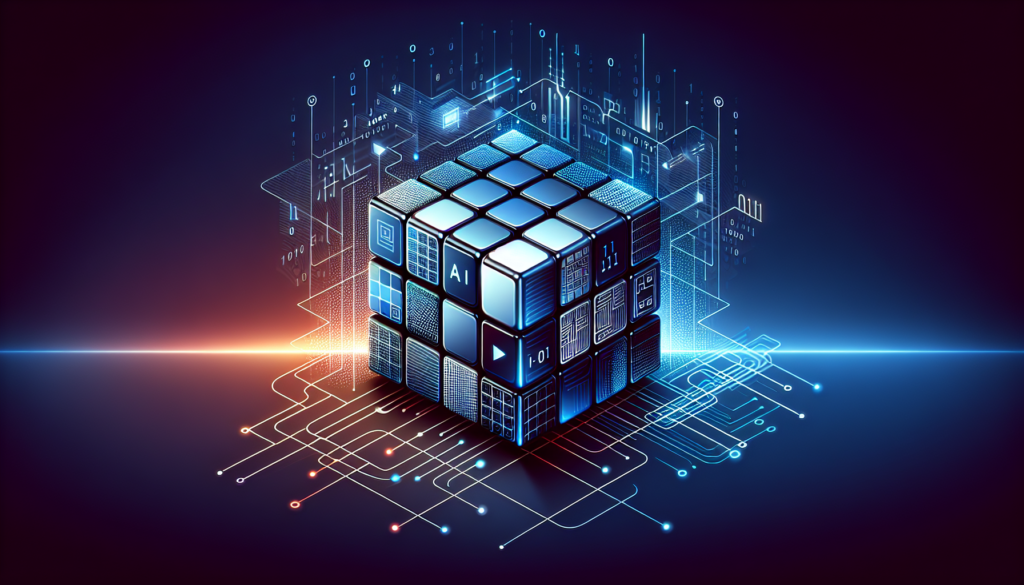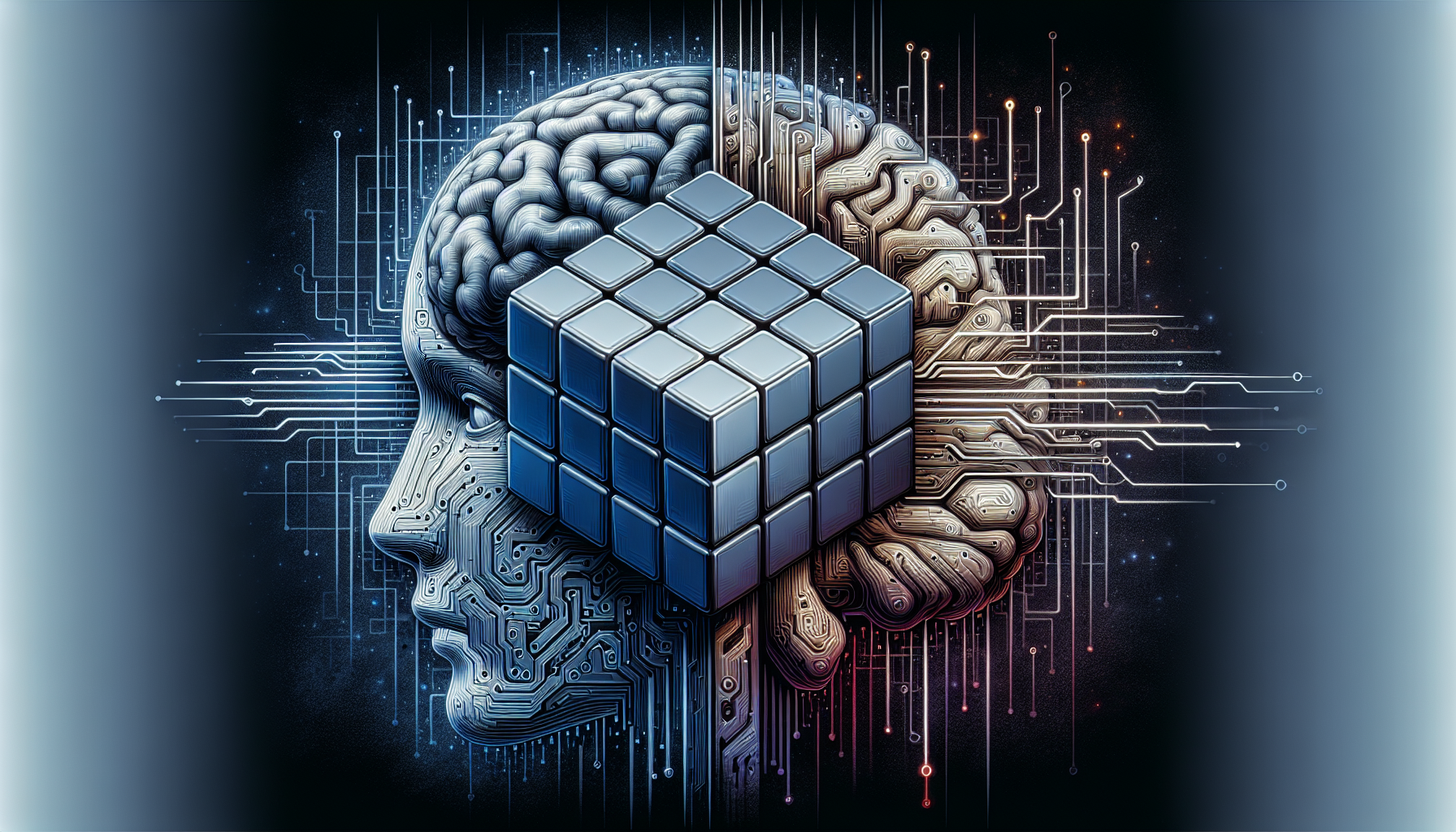AI, or Artificial Intelligence, has become a buzzword in today’s technology-driven world. It’s almost impossible to go a day without hearing about AI and its potential to transform various industries. But what exactly is AI in the simplest terms? At its core, AI refers to machines or systems that can mimic human intelligence, allowing them to perform tasks that typically require human thinking and decision-making abilities. In this article, we will explore the basics of AI, demystify its complexities, and provide you with a simplified explanation that anyone can understand. So, get ready to dive into the world of AI and unlock the secrets behind this fascinating technology.
What is AI in the simplest terms?
AI, or Artificial Intelligence, refers to the development of computer systems that can perform tasks that typically require human intelligence. In simpler terms, AI is a branch of computer science that focuses on creating smart machines capable of mimicking human behavior. These machines can process data, learn from it, make decisions, and perform actions based on the given information. AI aims to replicate and enhance human intelligence, allowing machines to think, reason, and problem-solve like humans.
Overview of AI
Definition of AI
Artificial Intelligence, often abbreviated as AI, is the theory and development of computer systems capable of performing tasks that would typically require human intelligence. It encompasses a wide range of techniques, algorithms, and approaches that enable machines to learn from data, make decisions, and solve problems. AI systems can interpret and understand natural language, recognize patterns, and adapt to new situations, all with the goal of imitating and augmenting human intelligence.
Goals of AI
The primary goals of AI revolve around creating machines that can effectively perform tasks that are currently carried out by humans. These tasks can be as simple as recognizing an object in an image or as complex as playing chess at a grandmaster level. AI aims to automate repetitive tasks, enhance human capabilities, enable better decision-making processes, and solve problems in various domains, such as healthcare, finance, transportation, and more.
Applications of AI
AI has a wide range of applications across various industries and sectors. In healthcare, AI is used for diagnosing diseases, analyzing medical images, and assisting in surgical procedures. In finance, AI is utilized for fraud detection, algorithmic trading, and personalized banking recommendations. AI also plays a significant role in autonomous vehicles, virtual assistants, recommendation systems, and smart home devices. The applications of AI are vast and continue to expand as technology advances.

Types of AI
Narrow AI
Narrow AI, also known as Weak AI, refers to AI systems that are designed to perform specific tasks or solve particular problems within a narrow domain. These AI systems excel in a specific area, such as facial recognition, voice assistants, or autonomous driving. While narrow AI can outperform humans in specific tasks, it remains limited to those tasks and lacks the general intelligence found in humans.
General AI
General AI, also referred to as Strong AI, is the concept of AI systems possessing human-like intelligence across a wide range of tasks and domains. General AI aims to mimic human intelligence, including comprehension, learning, reasoning, and problem-solving abilities. Creating a fully autonomous and self-aware AI system that can surpass human intelligence in all areas is an ongoing research focus, with significant progress made in various subfields of AI.
Superintelligence
Superintelligence refers to AI systems that surpass human intelligence in every aspect and are capable of outperforming humans in virtually all cognitive tasks. This level of AI poses significant philosophical and ethical questions as it implies that such systems would have superior intellect, creativity, and problem-solving capabilities compared to humans. While superintelligence remains more of a theoretical concept for now, its potential impact and implications are widely discussed in academic and scientific communities.
Machine Learning
Introduction to Machine Learning
Machine Learning is a subset of AI that focuses on the development of algorithms and models that enable machines to learn and make predictions or decisions based on data without being explicitly programmed. It is the process of training machines to improve their performance on a particular task through experience and exposure to data. Machine Learning algorithms learn patterns and relationships in data, allowing them to make accurate predictions or decisions when faced with new and unseen examples.
Supervised Learning
Supervised Learning is a type of Machine Learning where the algorithm is trained on a labeled dataset. The dataset consists of input data (features) and the corresponding correct output (labels). The algorithm learns to map the input data to the correct output by analyzing the patterns and relationships in the labeled data. Supervised Learning is commonly used for tasks such as classification, regression, and prediction, where the goal is to accurately predict the output given new input data.
Unsupervised Learning
Unsupervised Learning is a type of Machine Learning where the algorithm is trained on an unlabeled dataset. Unlike supervised learning, the algorithm does not have access to the correct output labels. Instead, it discovers patterns and structures in the data on its own. Unsupervised Learning is often used for tasks such as clustering, anomaly detection, and dimensionality reduction. It can help uncover hidden patterns and insights in large datasets without prior knowledge or human intervention.
Reinforcement Learning
Reinforcement Learning is a type of Machine Learning where an agent learns to interact with an environment to maximize a reward signal. The agent learns through trial and error, exploring different actions and receiving feedback in the form of rewards or penalties. Reinforcement Learning algorithms aim to find the optimal policy that allows the agent to make decisions that maximize the accumulated rewards over time. This type of learning is particularly suitable for tasks such as game playing, robotics, and autonomous systems.

Deep Learning
What is Deep Learning?
Deep Learning is a subfield of Machine Learning that focuses on artificial neural networks capable of learning and making decisions in a manner inspired by the human brain. Deep Learning models, also known as Deep Neural Networks, consist of multiple layers of interconnected neurons that process and transform input data to produce accurate predictions or decisions. Deep Learning has revolutionized many applications of AI, including computer vision, natural language processing, and speech recognition.
Artificial Neural Networks
Artificial Neural Networks are the fundamental building blocks of Deep Learning. These networks are composed of interconnected artificial neurons, which perform computations on the input data. Artificial Neural Networks are designed to mimic the structure and function of the human brain. They consist of an input layer, hidden layers, and an output layer, with each layer containing multiple neurons. The interconnected neurons work together to process and transform the input data, allowing the network to learn and make predictions.
Convolutional Neural Networks
Convolutional Neural Networks (CNNs) are a specialized type of Deep Learning model designed for computer vision tasks, such as image classification and object detection. CNNs are inspired by the organization of neurons in the visual cortex of animals. They consist of convolutional layers, pooling layers, and fully connected layers. CNNs utilize convolutional operations to automatically extract features from images, enabling them to effectively recognize patterns and objects, even in complex visual scenes.
Recurrent Neural Networks
Recurrent Neural Networks (RNNs) are a type of Deep Learning model designed to process sequential data, such as text or speech. Unlike traditional feedforward neural networks, RNNs have connections that allow information to be passed from one step to the next, creating a memory-like capability. RNNs excel in tasks such as language modeling, speech recognition, and machine translation. They can handle variable-length input sequences and capture dependencies between elements in the sequence.
Natural Language Processing
Understanding Natural Language Processing (NLP)
Natural Language Processing (NLP) is a subfield of AI that focuses on the interaction between computers and human language. NLP enables machines to understand, interpret, and generate human language in a meaningful way. It involves tasks such as language translation, sentiment analysis, text classification, and information extraction. NLP technologies enable machines to process and analyze vast amounts of textual data, making it possible for them to understand and generate human language effectively.
Language Translation
Language translation is one of the key applications of NLP, aiming to automatically translate text or speech from one language to another. NLP techniques, such as machine translation, use statistical models or neural networks to analyze and transform the input text or speech into the desired target language. Language translation systems have made significant progress in recent years and play a vital role in breaking down language barriers and facilitating communication across different cultures and languages.
Speech Recognition
Speech recognition, also known as Automatic Speech Recognition (ASR), is a technology that converts spoken language into written text. ASR systems utilize NLP techniques to transcribe spoken words accurately. These systems have improved tremendously in recent years, enabling voice assistants, transcription services, and voice-controlled devices. Speech recognition has numerous applications, such as dictation, voice commands, and automatic transcription, enhancing accessibility and improving user experience.
Sentiment Analysis
Sentiment Analysis is a branch of NLP that focuses on determining the sentiment or emotional tone expressed in a piece of text. It involves analyzing text to identify whether it expresses positive, negative, or neutral sentiment. Sentiment Analysis is commonly used in social media monitoring, customer feedback analysis, reputation management, and market research. By automatically analyzing and interpreting sentiment, businesses can gain valuable insights into customer opinions, preferences, and attitudes.
Computer Vision
Introduction to Computer Vision
Computer Vision is a field of AI that focuses on enabling computers to gain a high-level understanding of visual data, such as images and videos. It involves the development of algorithms and models that can interpret, analyze, and extract meaningful information from visual inputs. Computer Vision techniques allow machines to recognize objects, detect and track motion, and understand the content of images and videos. The applications of computer vision range from autonomous vehicles and surveillance systems to augmented reality and medical imaging.
Image Classification
Image Classification is a computer vision task that involves categorizing images into predefined classes or categories. It requires training an AI model on a labeled dataset where each image is associated with a specific class label. The model learns to identify distinctive features or patterns in the images that differentiate one class from another. Image classification is widely used in various domains, including healthcare, e-commerce, and security, enabling applications such as disease diagnosis, product recognition, and object identification.
Object Detection
Object Detection is a computer vision task that aims to identify and locate objects of interest within an image or video. Unlike image classification, object detection not only classifies the objects but also draws bounding boxes around them to pinpoint their precise locations. Object detection algorithms use a combination of techniques, such as convolutional neural networks and region proposal methods, to achieve accurate and reliable object detection. Object detection has applications in areas like autonomous driving, video surveillance, and robotics.
Facial Recognition
Facial Recognition is a specialized application of computer vision that focuses on identifying and verifying individuals based on their facial features. Facial recognition systems analyze and compare distinct facial characteristics, such as the size and shape of the eyes, nose, mouth, and overall facial structure. This technology has various applications, including identity verification for access control, surveillance systems, and digital image organization. Facial recognition has the potential to improve security measures, streamline identification processes, and enhance personalized user experiences.
Expert Systems
Overview of Expert Systems
Expert Systems, also known as Knowledge-Based Systems, are AI systems designed to provide expert-level knowledge and decision-making capabilities in specific domains. These systems utilize a knowledge base, which is a repository of domain-specific information and rules, to reason and problem-solve. Expert systems can emulate the expertise of human experts and provide intelligent recommendations, predictions, or solutions. They find applications in areas such as healthcare diagnosis, financial analysis, and technical support.
Knowledge Representation
Knowledge Representation is the process of encoding and structuring knowledge in a format that can be used and understood by AI systems. In expert systems, knowledge is typically represented using rules, facts, objects, and relationships. The knowledge base stores this information and allows the system to reason and make decisions based on the encoded knowledge. Effective knowledge representation is crucial for expert systems to provide accurate and reliable recommendations or solutions in the given domain.
Inference Engine
The Inference Engine is a crucial component of an expert system that performs logical reasoning and inference based on the encoded knowledge. It uses the knowledge base and the input provided by the user to draw conclusions and make decisions. The inference engine applies logical rules and deduction mechanisms to examine the relationships and constraints within the knowledge base, allowing the system to generate intelligent solutions or recommendations. The efficiency and accuracy of the inference engine play a vital role in the performance of expert systems.
Advantages and Limitations
Expert systems offer several advantages, including the ability to provide consistent and reliable decision-making, access to expert-level knowledge in specific domains, and the potential for cost and time savings. These systems can automate complex tasks, reduce human errors, and serve as a valuable resource for non-experts. However, expert systems also have limitations, such as the dependence on accurate and up-to-date knowledge, the difficulty in capturing tacit knowledge, and the challenge of handling uncertainties and exceptions. Additionally, expert systems may not possess the adaptability and learning capabilities of other AI approaches.
Ethical Considerations in AI
Bias in AI
AI systems are not immune to biases, as they learn from data that may reflect societal biases or contain inherent biases. These biases can perpetuate unjust or discriminatory outcomes in areas such as hiring practices, criminal justice systems, or loan approvals. Recognizing and mitigating bias in AI is crucial to ensure fairness and prevent harm. Addressing bias requires diverse and inclusive datasets, transparent algorithms, continuous monitoring, and ethical guidelines to guide the development and deployment of AI systems.
Privacy Concerns
AI systems often rely on large amounts of personal data to function effectively. This raises privacy concerns, as individuals may be worried about how their data is collected, stored, and used. Safeguarding personal information and ensuring privacy is important in AI applications. Striking a balance between the utility of AI systems and the protection of individual privacy requires robust data protection measures, transparent data practices, informed consent, and secure data storage and handling protocols.
Job Displacement
The widespread adoption of AI has led to concerns about job displacement and the potential impact on employment. While automation can eliminate certain tasks, it also creates new opportunities and jobs. AI has the potential to augment human capabilities, improve productivity, and create new industries and roles. To address job displacement, it is important to invest in reskilling and upskilling programs, promote lifelong learning, and facilitate the transition to a future workforce that can effectively collaborate with AI systems.
Safety and Security
AI systems, especially those with autonomous capabilities, raise concerns regarding safety and security. Ensuring the reliability, robustness, and integrity of AI systems is essential to prevent potential risks or malicious use. Establishing standards and regulations for AI development and deployment, conducting thorough testing and validation procedures, and implementing safeguards against unauthorized access or misuse are critical for maintaining the safety and security of AI technologies.
Conclusion
In conclusion, AI, or Artificial Intelligence, is a fascinating field of computer science that aims to develop machines capable of imitating and augmenting human intelligence. AI encompasses various subfields, including Machine Learning, Deep Learning, Natural Language Processing, Computer Vision, and Expert Systems. These subfields contribute to different aspects of AI, enabling machines to learn, reason, understand natural language, process visual data, and make intelligent decisions. However, ethical considerations, such as bias, privacy, job displacement, and safety, must be addressed to ensure the responsible development and deployment of AI technologies. By harnessing the enormous potential of AI and staying mindful of ethical implications, we can shape a future where AI benefits humanity and enhances our lives in meaningful ways.
